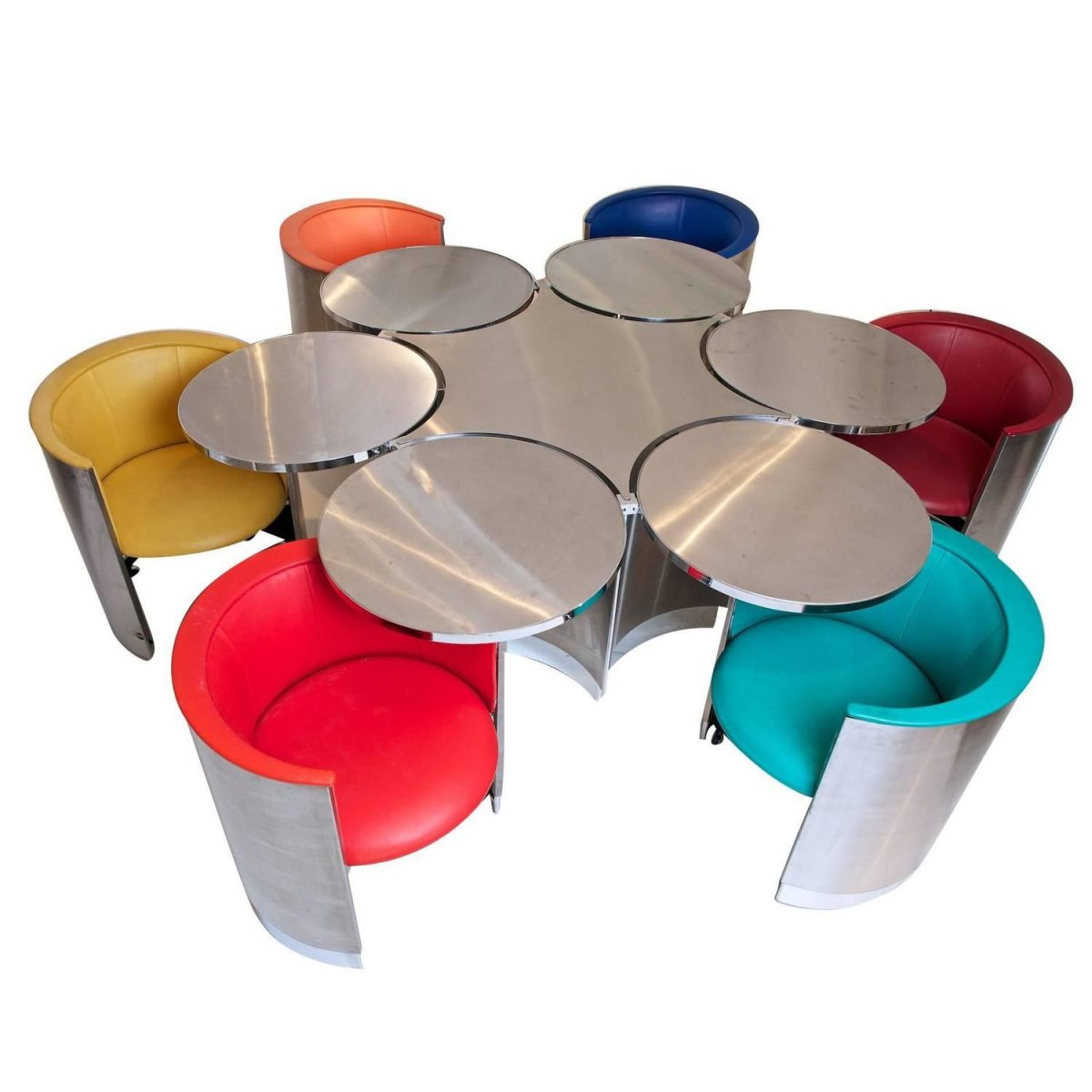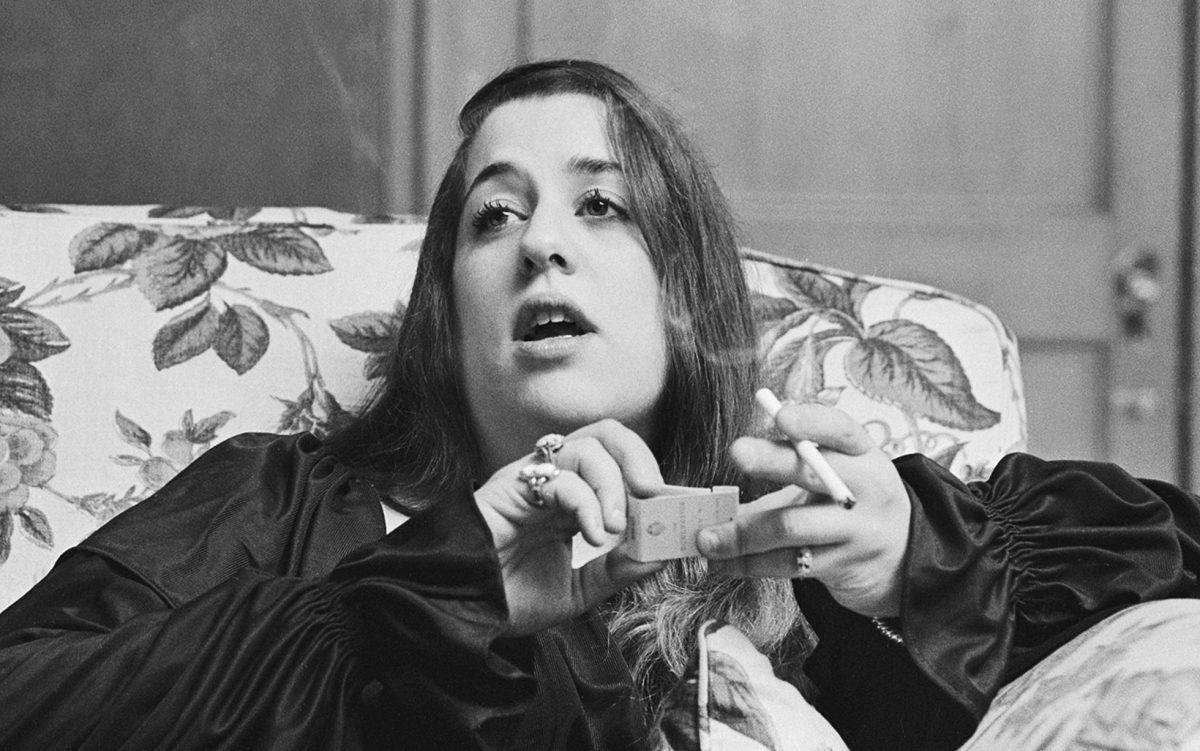
Marianne Faithfull pointed at a pale man sitting next to her and told a reporter, rather optimistically, that Oliver Musker, the twenty-seven-year- old Old Etonian she was seeing at the time and who had recently rescued her, albeit temporarily, from heroin addiction, was to become her second husband. The wedding was to be in the autumn, ‘when all the leaves turn brown,’ she said dreamily, ‘it suits our mood.’ She was quoting the Mamas and the Papas because they were both at a party at Crockfords, the Mayfair casino, as a guest of Cass Elliot, who was celebrating the start of a two-week engagement at the London Palladium which had begun two nights before on 15 July 1974.
Elliot went on to receive good reviews for her shows in London that summer although nearly all of them mentioned her weight. The Observer wrote:
Although she is a large lady, Miss Elliot does a thin girl’s act, capering about like two Ginger Rogerses welded together.
The Daily Express told their readers that she had been dieting continuously and had given up alcohol for more than a year:
Mama Cass Elliot is considerably lighter than when she was last in Britain. By 80 lb to be exact and is now weighing 141⁄2 stone. She sang the Mamas and the Papas’ favourites, ‘Monday Monday’, and ‘California Dreaming’ but got a little breathless during the song and dance routines.
Although the posters for the Palladium shows bill her as “Mama”, Elliot told the Daily Express reporter David Wigg, after he had brought up her weight yet again, that she would hit him in the mouth if he called her ‘Mama’ once more. She told him:
I’d like to lose more because I’m getting older. These days when you approach middle thirties you think about heart disease.
Earlier that year the Palladium had proudly announced the rather unlikely boast that they were the only theatre in the world presenting twice-nightly variety bills. The main headliners on the bill of the summer season that year, other than Cass Elliot, included Frankie Vaughan, Vic Damone, Debbie Reynolds, Ken Dodd and Larry Grayson. Louis Benjamin, presenter of the Royal Variety Performances and managing director of the London Palladium, said: ‘There are few stars who can fill a theatre for weeks on end. We cannot compete with Las Vegas or some of the Northern Clubs. A season at the London Palladium, though, is still a stamp of prestige.’
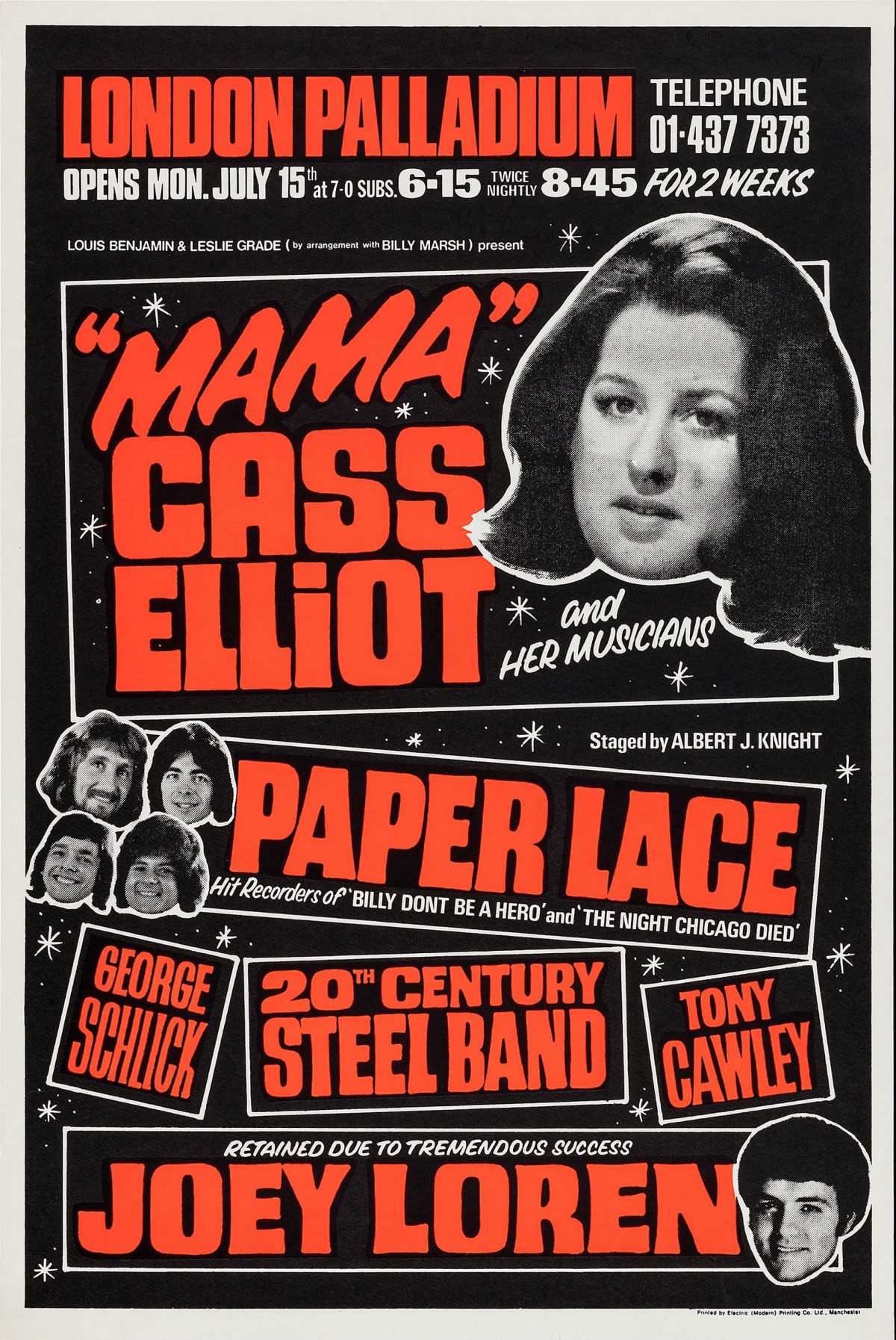
It was all very middle-of-the-road fare. Cass Elliot was supported in her show by Paper Lace who, in their programme notes, had written that they intended to become ‘a top class concert and cabaret group’ through the use of ‘classy’ material. After the band played their only two hits, ‘Billy Don’t be a Hero’ and ‘The Night Chicago Died’ it was time to get classy and the guitarist started singing ‘Ave Maria’ in full Italian-religioso style while the other members of the band gathered around the mike to give harmonised support.
At the end of the last show of the two-week sell-out engagement, Cass Elliot received several standing ovations. When she went back to the Palladium dressing room for the last time she scrawled in lipstick over the mirror a message to Debbie Reynolds:
Dear Debbie, if they are half as nice to you as they were to me, you will have a great time. Love Cass.
Elliott marked the end of her Palladium season with forty-eight hours of celebrations. She received a standing ovation and then went on to Mick Jagger’s birthday party, held with Bianca Jagger at Tite Street in Chelsea. Debbie Reynolds along with her two children Carrie and Todd had also been at the same party, and in her memoir Unsinkable mentions that there had been cocaine and other hard drugs in use there. Jagger warned her not to take her children upstairs.
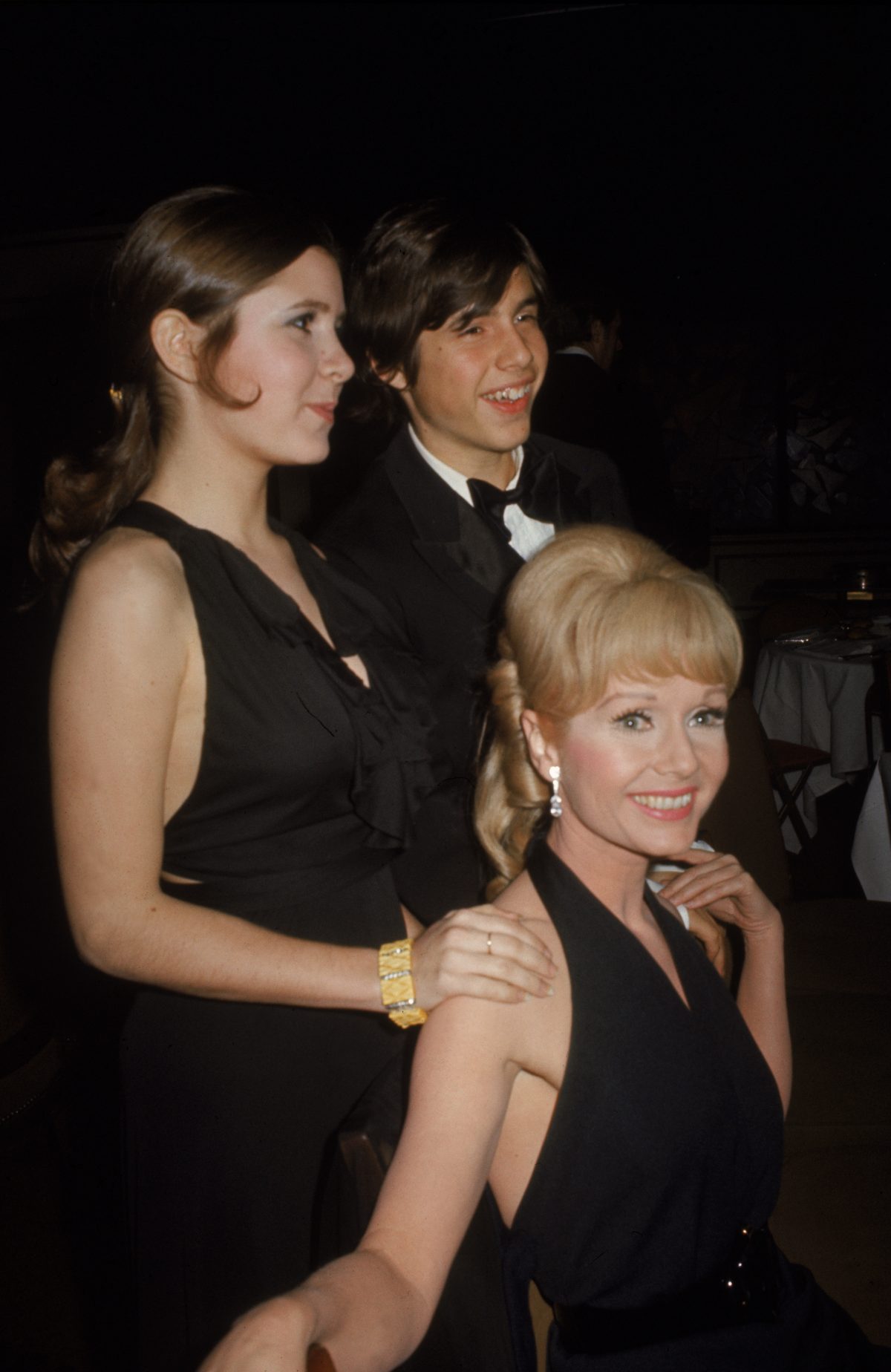
American actress Carrie Fisher (left) stands with her mother and co-star singer Debbie Reynolds, and her brother Todd Fisher in 1974. (Photo by Tim Boxer/Getty Images)
After Mick and Bianca’s party – without sleep – she went to what the newspapers were still calling in 1974 ‘a breakfast-lunch’ given for her by the singer Georgia Brown. She then went straight to a cocktail party given by the American journalist Jack Martin where Alan Bates, David Hemmings and Rachel Roberts were in attendance. She left this party at 8.00 p.m. saying she was tired and then she went back home.
During Elliot’s time at the Palladium,‘home’ was in Mayfair at her friend Harry Nilsson’s apartment in Curzon Place. He had bought it two years previously in 1972 while he was particularly good friends with Ringo Starr; it was a two-bedroomed top-floor flat in a large eighteenth-century house at 9 Curzon Place, on the south-east edge of Mayfair. Nilsson and Ringo had become good friends during 1972: Ringo, although credited as ‘Richie Snare’, was the drummer on much of Nilsson’s Son of Schmilsson released in July of that year. ‘Ringo and I spent a thousand hours laughing,’ Nilsson once said. They were part of a social set that included Marc Bolan, Keith Moon and Graham Chapman of Monty Python’s Flying Circus. As rock stars can do, they met in the afternoon and when each arrival dropped by they would say, ‘I hope I’m not interrupting anything?’ Nilsson recalled: ‘We would drink until 9 p.m. That’s six hours of brandy. Then between 9 and 10, we would usually end up at Tramp, the most uproarious exclusive disco-restaurant in the world. Royals, movies stars, world champions, all frequented there. It was really a ride, meeting these luminaries and having total blow-outs almost every night.’
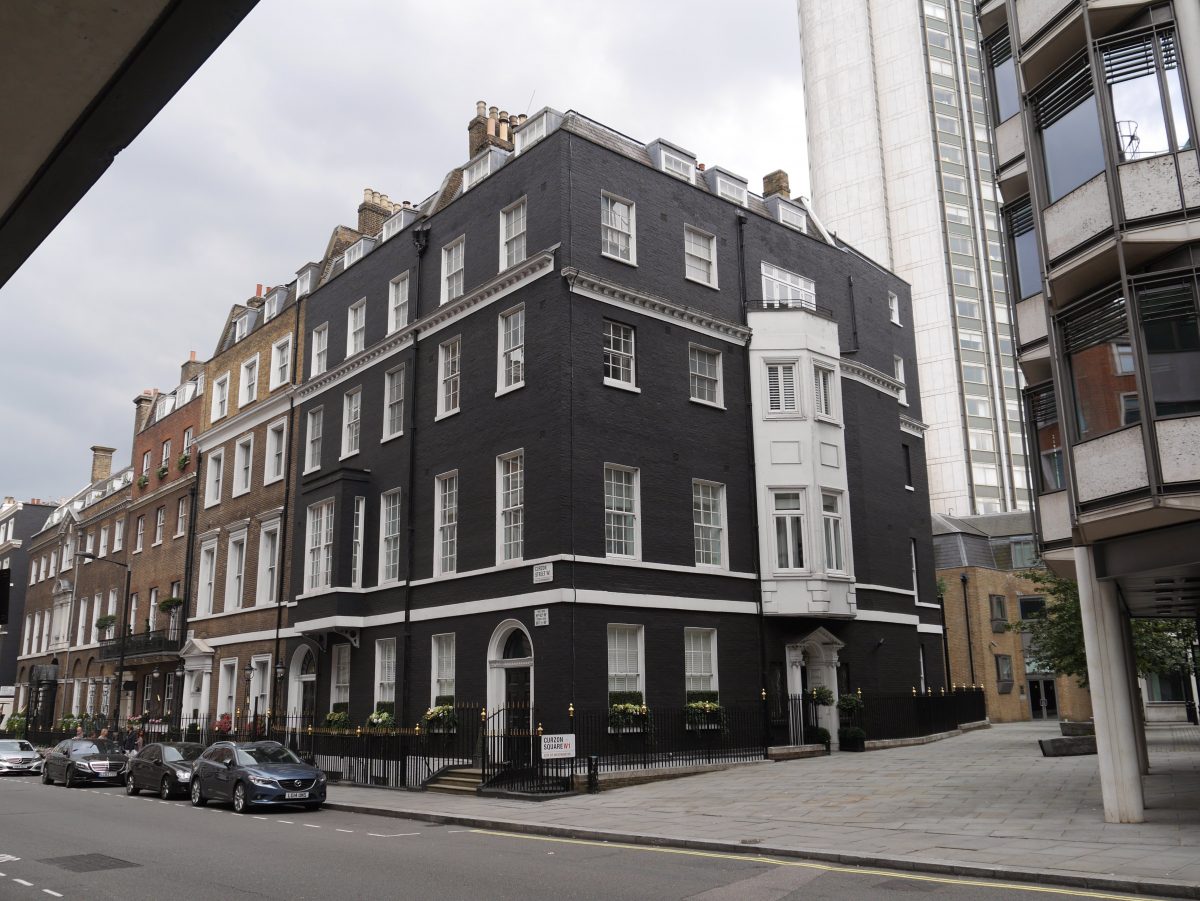
1 Curzon Square Nilsson’s old flat
Flat 12, 9 Curzon Place was where many of the ‘total blow-outs’ took place. It was different from the rest of the apartments in the building in that it was above the bay-window extension and had balconies on both sides of the building; from one it was possible to see the Palace of Westminster, while the other offered a particularly good view of the Bunny Girls coming and going to work at the nearby London Playboy Club. When Nilsson first found the place it looked old-fashioned and he was very keen for it to be completely re-designed. He decided to take on Ringo, who the previous year had set up a design partnership with the sculptor and furniture-maker Robin Cruickshank, called ROR, which stood for Ringo or Robin. One of Ringo’s earliest ideas was a Rolls-Royce Grille Table and a chrome-plated antique telephone that became the logo for Ringo’s record company Ring O’ Records. One of ROR’s early clients was the Soho porn baron Paul Raymond, not known for his discerning or sophisticated taste, who asked them to design a patio for his apartment at Fitzhardinge House, a ’60s building on the corner of Baker Street and Portman Square.

20th December 1967: Young hopefuls place their bets at London’s Playboy Club on Park Lane, Central London (Photo by David Cairns/Express/Getty Images)
When ROR had completed their work the patio featured an illuminated fountain with underwater lights which pulsated in time to the music. Above this was a huge aluminium-and-glass-domed roof which slowly opened and closed at the press of a button. At one point Baker Street had to be closed to traffic while a crane lifted the domed roof into position. Raymond was so impressed with ROR’s work that he got them to redesign the boat he had just bought. Fiona Richmond had persuaded him to call the yacht ‘Get ‘em orf’ in Latin, and thus it was called Veste Demite.
Nilsson once remembered that, as far as his apartment was concerned, he had let the designer go wild: ‘Robin made this great, amazing pad. It was … all glass and chrome and felt and velvet. And the price had doubled from the quote, and then Mr R. Starkey picked up the difference, or most of it. The first day I entered the flat it was completely finished. I had just come from America and I was shocked. I didn’t know what to think. And then I thought for a second, and I loved it. As a little gift, Ringo and Robin and had made these special mirrors for the two-sinked bathroom. They were done in etched glass. One was a picture of an oak tree. But on the other, there was etched a hangman’s noose.’
As soon as Cass Elliot had got back to all the chrome, glass and velvet at Curzon Place after Jack Martin’s party, she called her former Mamas and Papas band member Michelle Phillips, who later recounted: ‘She had had a little champagne, and was crying. She felt she had finally made the transition from Mama Cass.’ The next morning Cass’s secretary Dot MacLeod and Joe Croyle, a twenty-five-year-old singer who had appeared with Cass in the Palladium show, had both come round to the apartment. Dot had been there all day but had deliberately tried not to disturb the singer because they knew she often slept very late. At about seven in the evening she opened the door to Elliot’s bedroom and found the singer dead.
Cass Elliot died choking on a ham sandwich; everybody knows that. Except that she didn’t. The myth began because the first doctor who examined her after her death, Dr Anthony Greenburg, in a late-night press conference, said, ‘She was lying in bed eating and drinking a Coca-Cola while watching television. She was half propped up by pillows and it seems that she choked on her sandwich and inhaled her own vomit.’ Dr Greenburg added, ‘She had been dead for some considerable time before her body was found.’
Dr Greenburg, Elliot’s own physician, had overlooked the relatively important fact that the ham sandwich was by the side of her bed and untouched, but by then it was too late. The press reported his initial comments and the doctor unwittingly gave rise to the sandwich myth. A few days later at the inquest Gavin Thurston, the Westminster coroner, recorded a verdict of death from natural causes. ‘There was left-sided heart failure,’ wrote pathologist Professor Keith Simpson. ‘She had a heart attack which developed rapidly.’ Cass Elliott had been going on crash diets for years which in the end fatally weakened her heart. She was just thirty- two when she died.
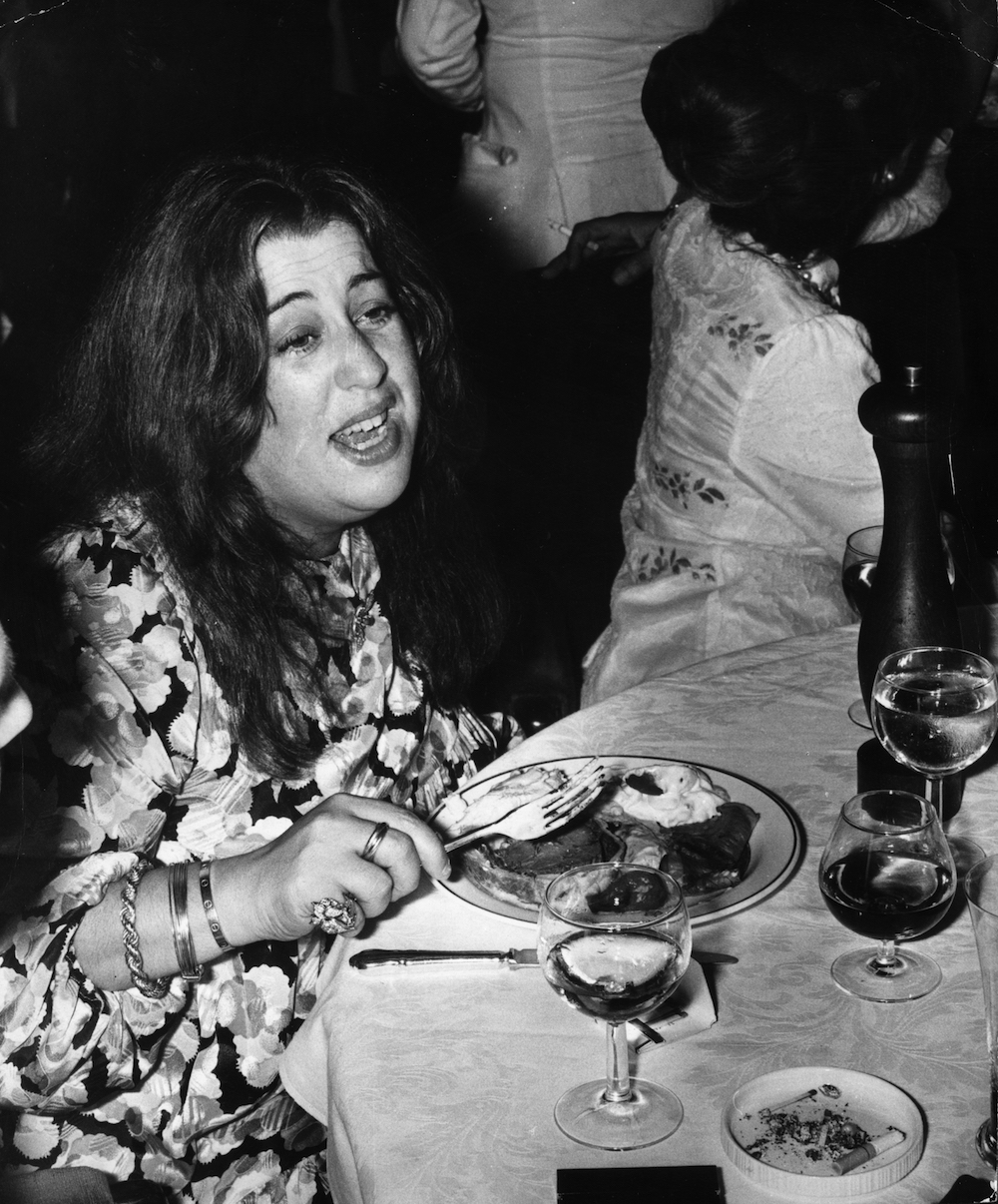
Cass Elliot eating a typically healthy meal interspersed with cigarettes at a party at Crockford’s casino in London, circa 1974. (Photo by Joe Bangay/Evening Standard/Getty Images)
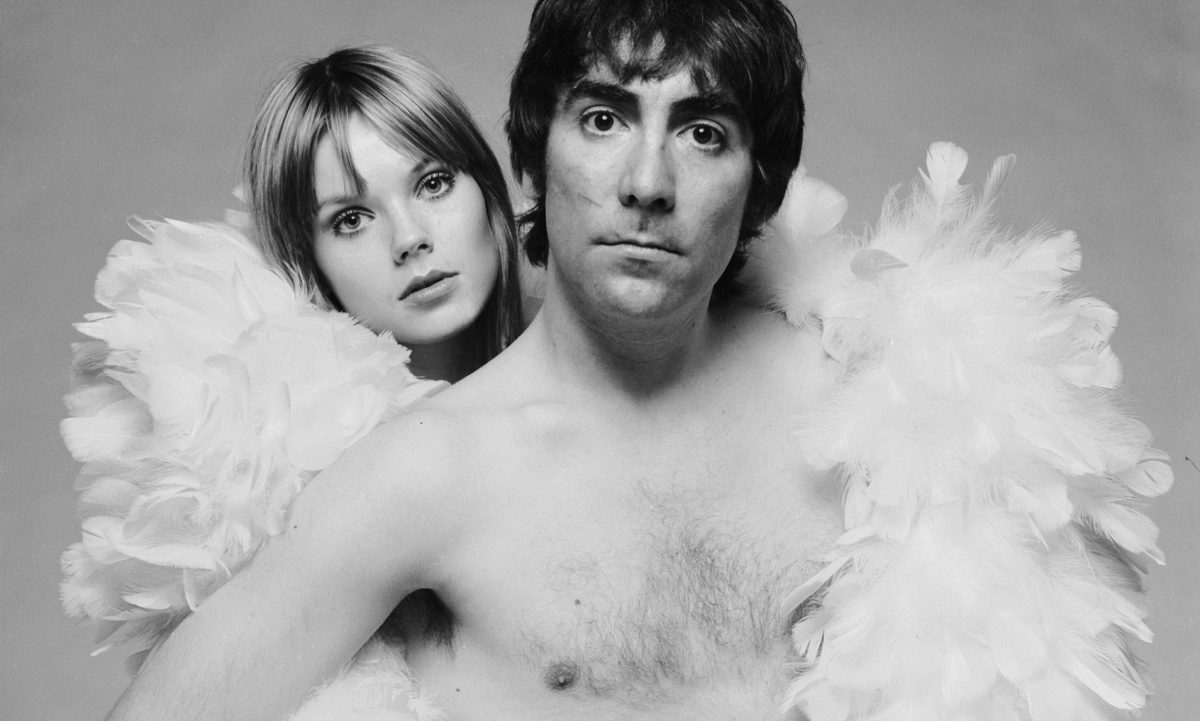
Keith Moon (1946 – 1978), the drummer for The Who, with his girlfriend Annette Walter-Lax, circa 1975. (Photo by Terry O’Neill/Iconic Images/Getty Images)
Four years after the death of Cass Elliot at Harry Nilsson’s flat, Keith Moon, after fitting in enough partying and convivial nights in his short life for a small town, died of an overdose of Heminevrin tablets in the very same bed. Keith and his girlfriend, Annette Walter-Lax, had been to a party held by Paul McCartney at the trendy chrome and neon-lit cocktail-bar restaurant called Peppermint Park on St Martin’s Lane, Covent Garden. By many accounts Keith was unusually quiet and sober and shared a booth with the McCartneys, David Frost, John Hurt and, Kenny Jones – Moon’s eventual replacement, ironically. At midnight, everyone went to the Odeon, Leicester Square, for the late-night première of the Buddy Holly Story that starred Gary Busey. Before the end of the film Keith and Annette caught a taxi back to Curzon Place. Keith started watching the film The Abominable Dr Phibes but fell asleep after taking several Heminevrin sedatives that had been prescribed to aid alcohol withdrawal. At about 7.30 a.m. he ordered Annette to cook him steak for breakfast. She complained but Keith retorted with, ‘If you don’t like it, you can fuck off.’ They were to be his last words.
Annette, who had been sleeping on the living room couch because of Moon’s incessant snoring, discovered him in the afternoon, face down on the bed, and he was found to be dead on arrival at Middlesex Hospital in Westminster. He was thirty-two and had died just three weeks after the release of The Who album Who Are You. On the album cover, he is seated on a chair back-to-front to hide his recent weight gain. The words NOT TO BE TAKEN AWAY are written on the back of the chair. Press assistant Paul Goodman was rather disingenuous the next day when he said, ‘Keith drank whisky more than he took drugs – but he wasn’t an alcoholic,’ while his colleague Keith Altham added that the band had decided to carry on: ‘They won’t wind up. They feel they should go on … because Keith was never a quitter.’
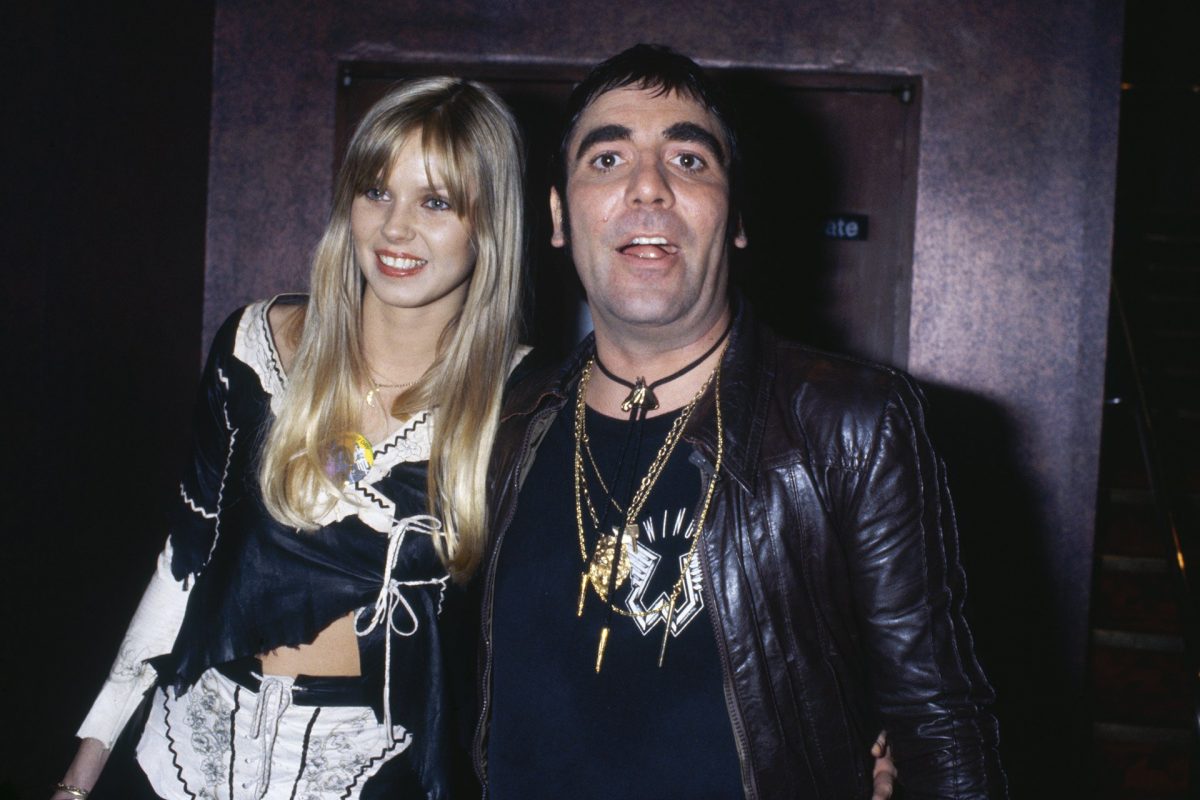
Keith with Annette on the night he died.
It was Professor Keith Simpson, as it was with Cass Elliot, who performed the post mortem. Of the thirty-two Heminevrin tablets he found in Moon’s stomach, twenty-six were undissolved. ‘The quantity was enormous,’ Professor Simpson wrote down, ‘and constituted a vast overdose.’ A half-empty bottle of 100 Heminevrin tablets was found at Moon’s bedside at Curzon Place and the coroner recorded an open verdict. Moon the Loon was only thirty-two when he died, but dying young didn’t come to anyone’s great surprise. He once outlined his typical daily diet to a doctor:
I always get up about six in the morning. I have my bangers and eggs. And I drink a bottle of Dom Perignon and half a bottle of brandy. Then I take a couple of downers. Then it’s about 10 and I’ll have a nice nap until five. I get up, have a couple of black beauties [also known as Black Birds or Black Bombers and are a combination of amphetamine, or speed, and dextroamphetamine], some brandy, a little champagne and go out on the town. Then we boogie. We’ll wrap it up about four.
It wasn’t what a doctor would recommend for a long and healthy life but Keith had fitted in some fun during his relatively short life. He and Harry had become friends in the first place because of their mutual love of alcohol. They had originally met on the set of a film produced by Ringo Starr called Son of Dracula that was to star Nilsson. Nilsson had told Ringo that he expected no fee for appearing in the movie, but the ex-Beatles drummer paid for him to have cosmetic dentistry to straighten his crooked front teeth, historically one of the reasons that Nilsson had been very shy of appearing live. As well as Keith and Harry, other musicians were in the film including Marc Bolan and Peter Frampton. Keith remembered, ‘We were supposed to be on the set at six, but it was nine before everyone was there. Then somebody brought out a bottle of brandy. Me, I think. Ah-ha-ha-HAHAHA! And Peter Frampton said no, no, too early, and some of the others said no. But ’Arry was standing there with an ’alf-pint mug. I knew at that moment it was destiny put us together. Ahhhh-HAHAHAHAHAHAHA!’

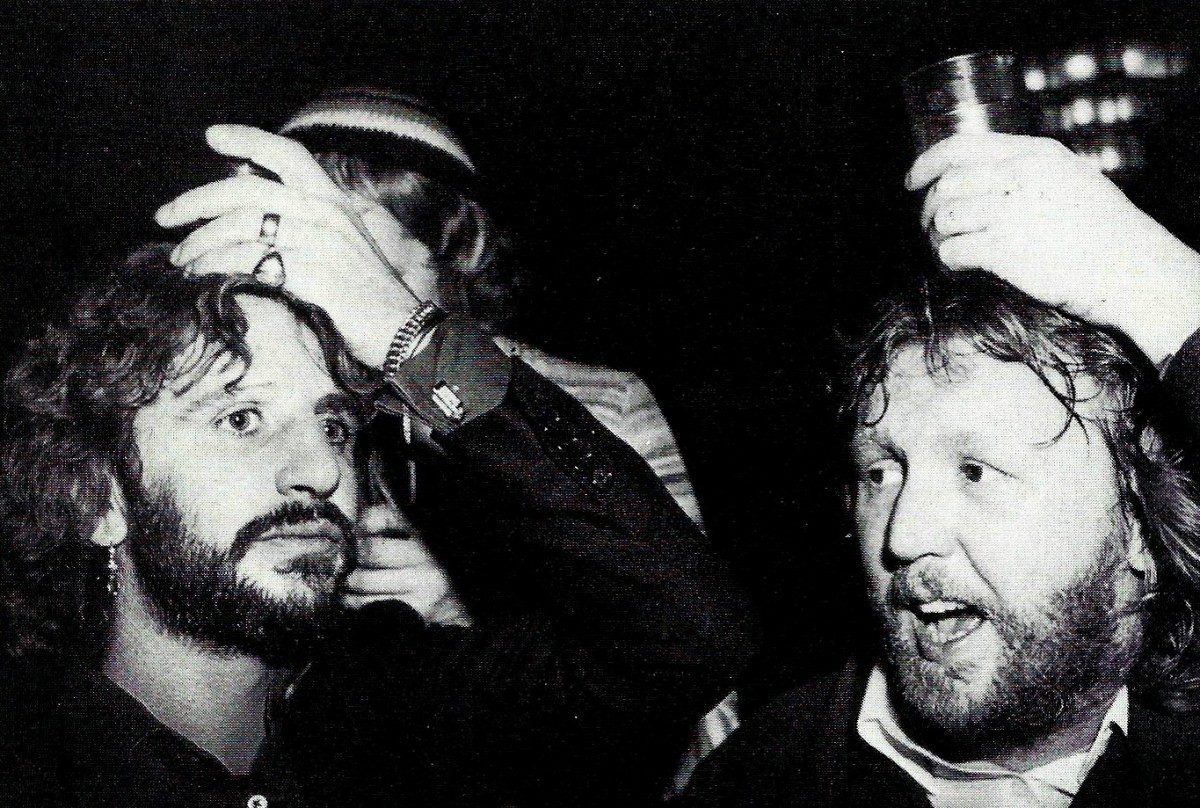
After the death of a second friend in his bed, Nilsson quickly sold his flat to another Who member, Pete Townsend, and then moved back to Los Angeles permanently. Of course, like Cass, and especially Moon, Harry Nilsson liked having a good time and his consumption of drink and drugs were once described as Herculean. Marianne Faithfull once said of Nilsson: ‘We used to do drugs together. And when I say drugs, I don’t mean those airy-fairy drugs they do nowadays. I’m talking about narcotics.’ Elton John, another person who knows what he’s talking about in this respect, once described seeing Nilsson in a recording studio: ‘He opened his mouth to sing, and blood poured out; he had done so much coke that his throat just haemorrhaged. And do you know what? He didn’t even notice.’
Compared with his two friends, Elliot and Moon, however, Nilsson managed to live to the relatively grand old age of fifty-two. After surviving one heart attack in 1993, he died from another the following year. At his funeral the mourners felt after-shocks from the Northridge earthquake that was rumbling in the background. A joke went round that it was the result of Harry getting to heaven and discovering that there were no bars. Not long before his first heart attack Nilsson found out that his entire $5 million fortune had been embezzled, leaving him and his family almost destitute, and it was said that he never really recovered from the shock.
It’s interesting to note that Mama Cass, a person who struggled with her weight nearly all her life, died from trying not to eat, with a heart fatally weakened by too many diets. Keith Moon, a man with a prodigious appetite for alcohol, died from an overdose of medicine prescribed in an attempt to stop him drinking.
In 2001, the building at Curzon Place containing Harry Nilsson’s old flat was bought by a developer who completely changed the interior, and the three flats on Harry’s floor were knocked into two luxury flats. The road has also changed its name to Curzon Square. The apartments these days are worth several million pounds each.
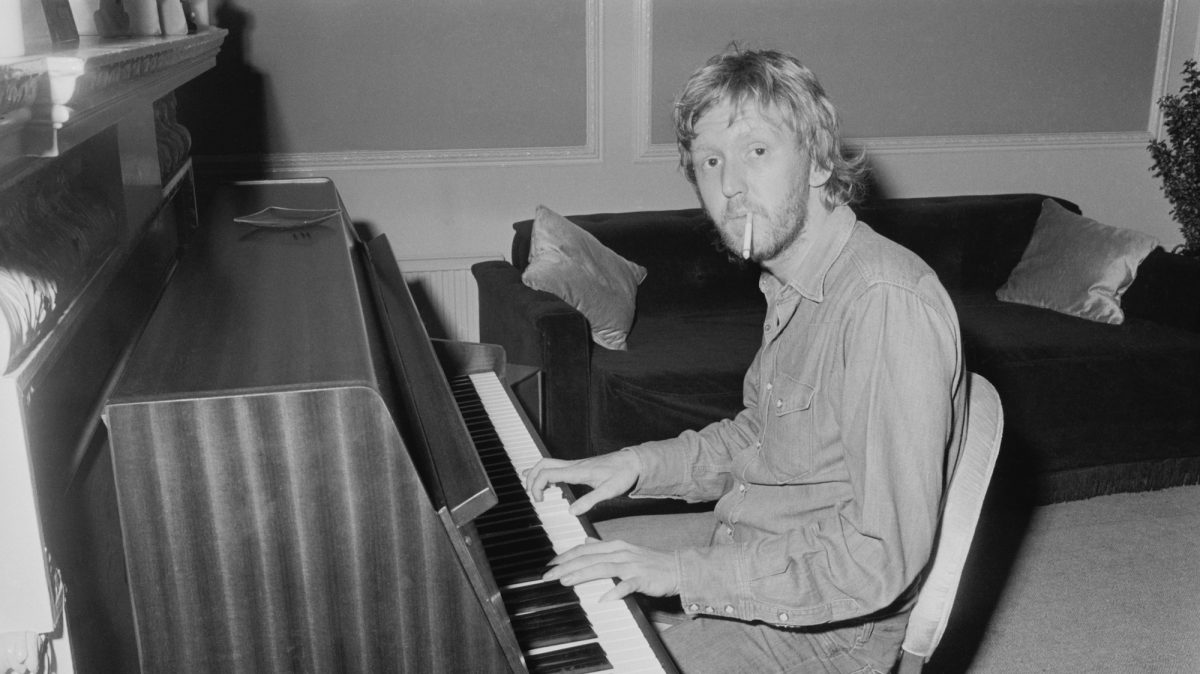
Would you like to support Flashbak?
Please consider making a donation to our site. We don't want to rely on ads to bring you the best of visual culture. You can also support us by signing up to our Mailing List. And you can also follow us on Facebook, Instagram and Twitter. For great art and culture delivered to your door, visit our shop.

